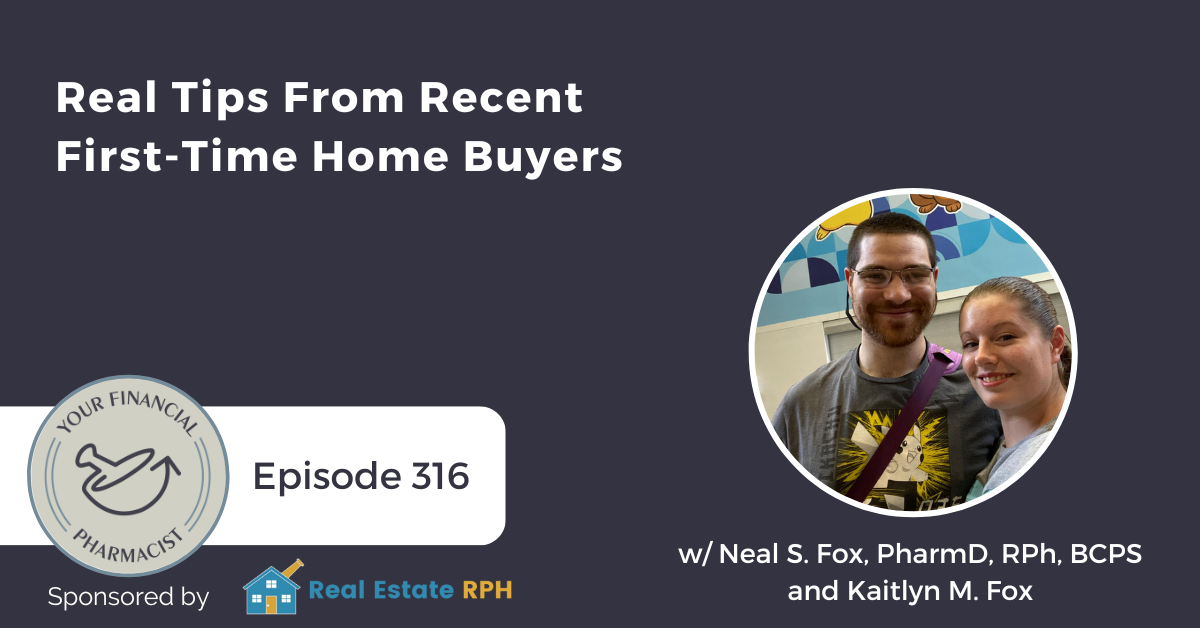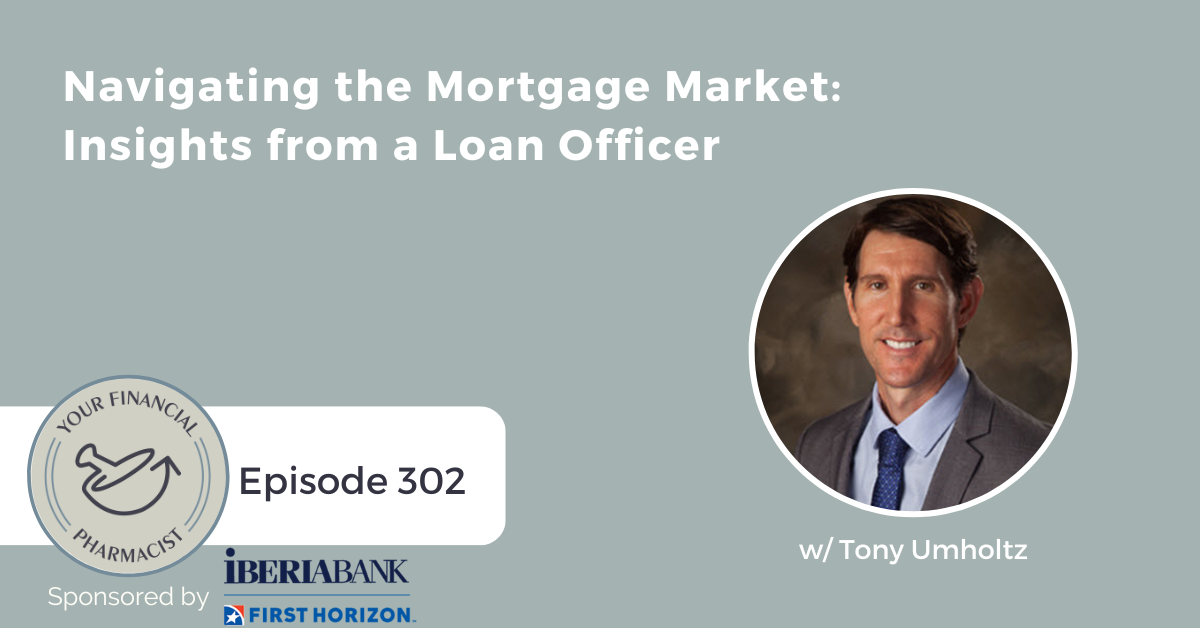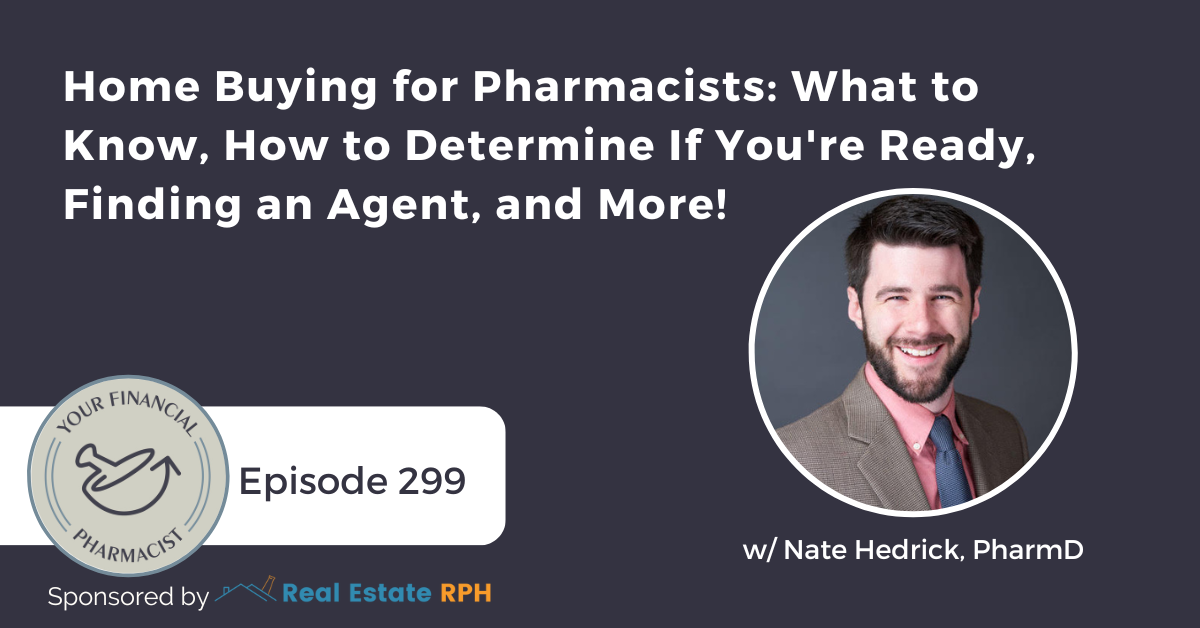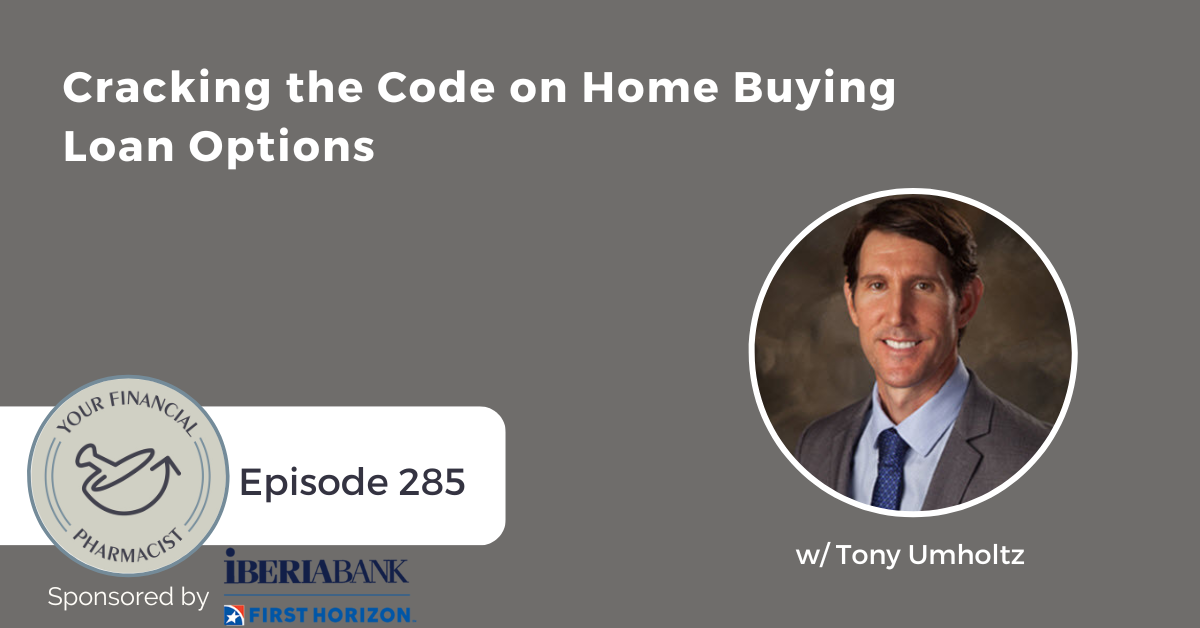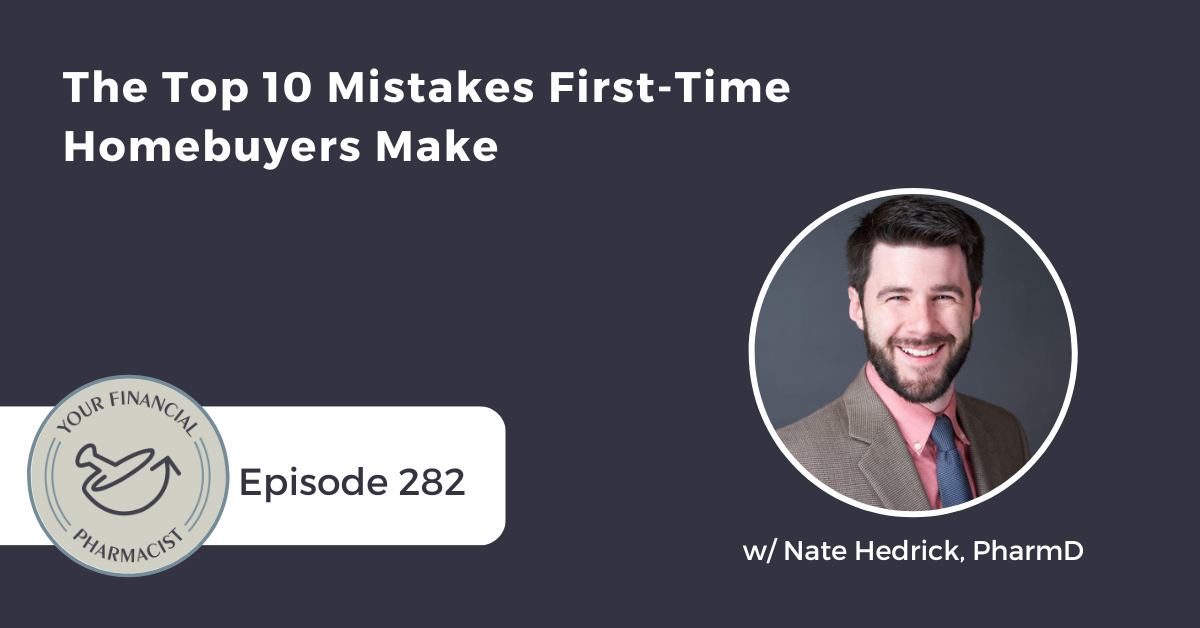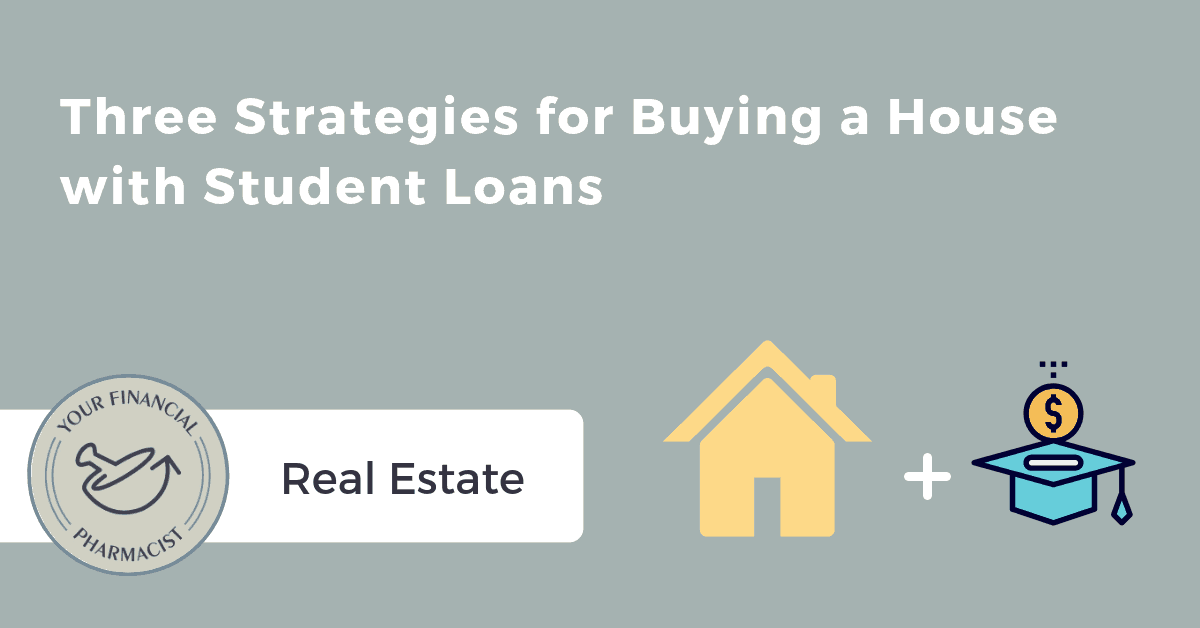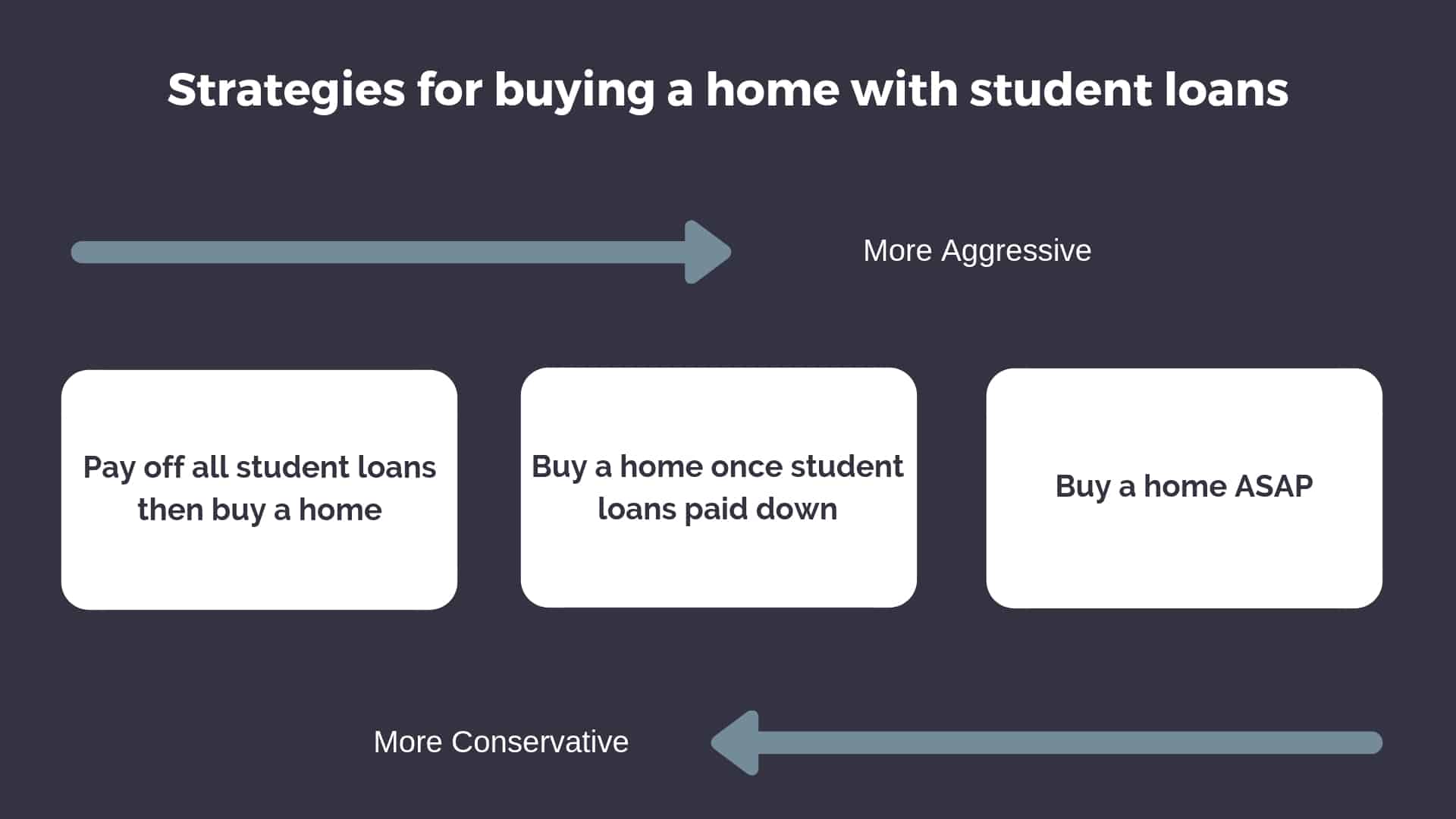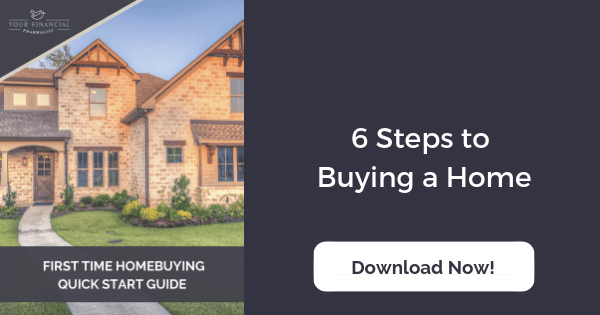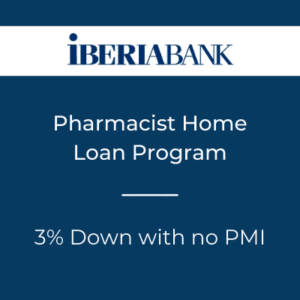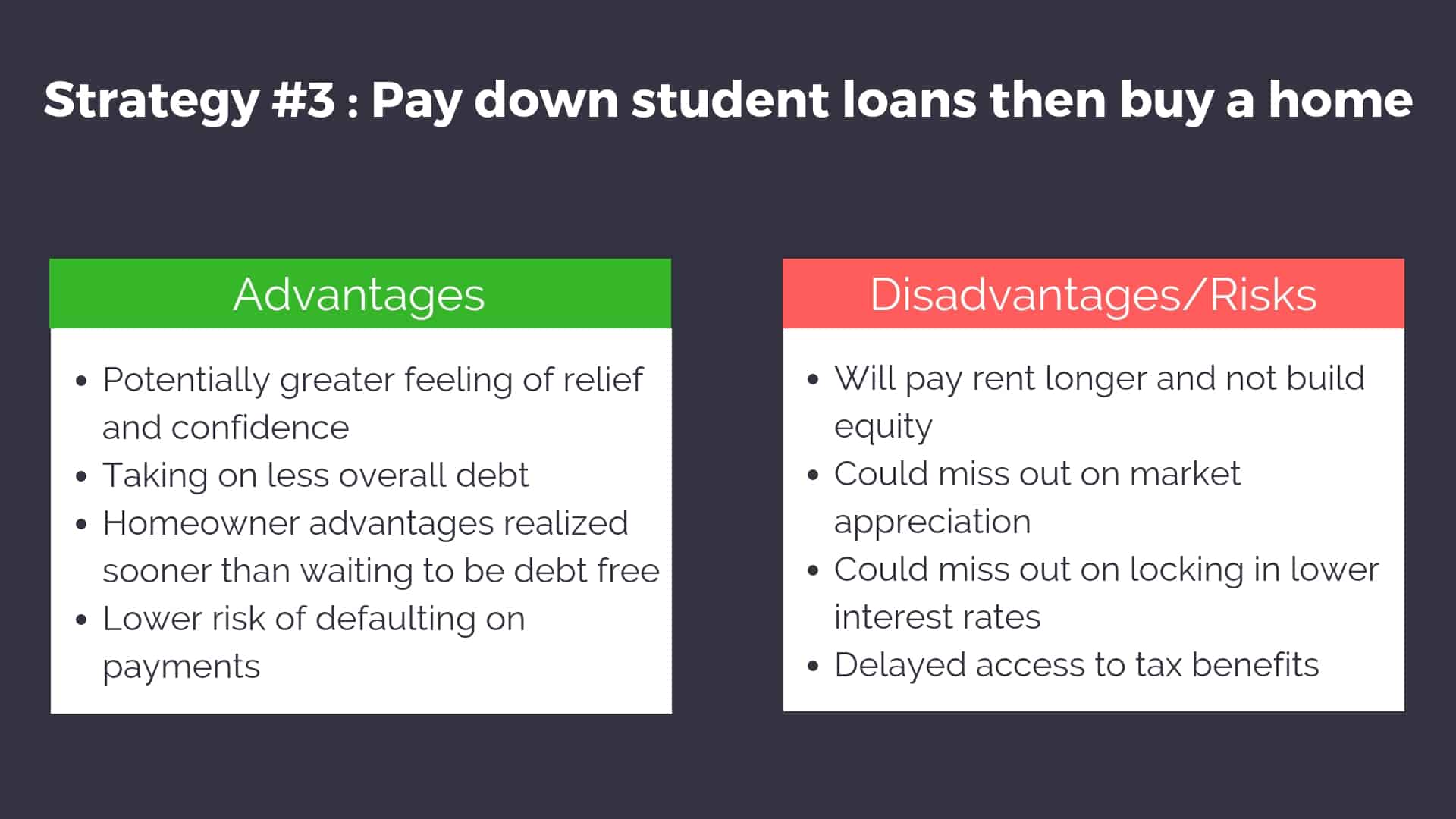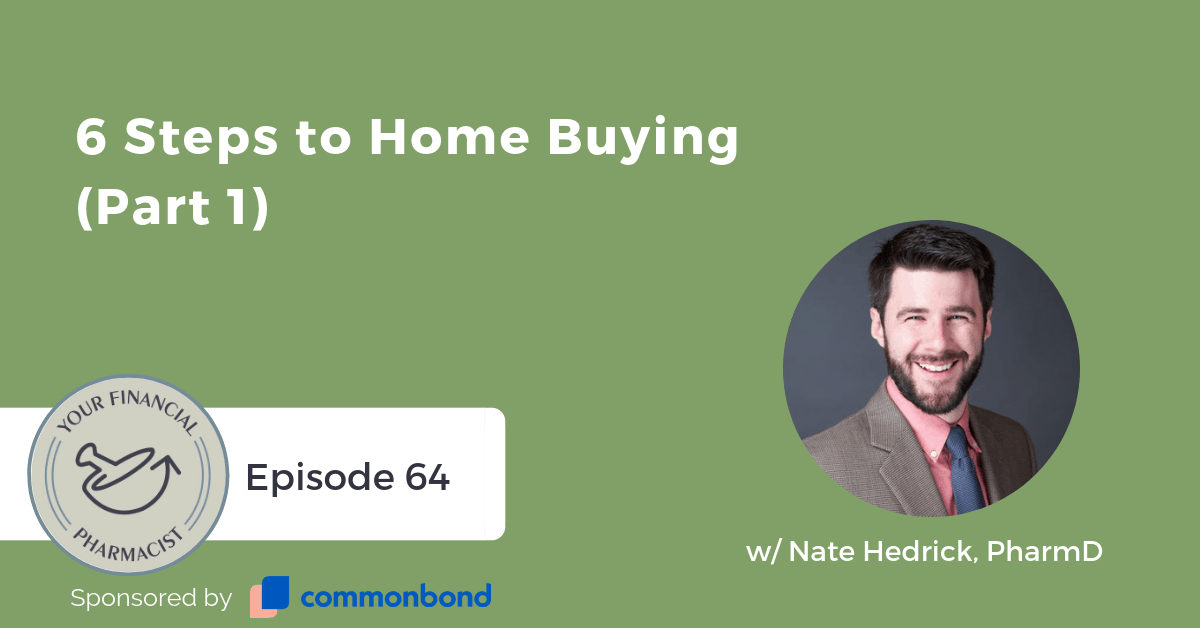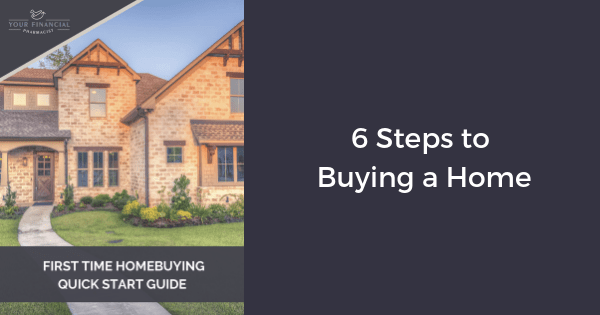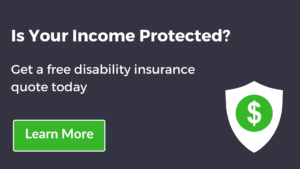Mortgage loan officer Tony Umholtz joins the show to discuss available loan options (including the pharmacist home loan), why a preapproval matters, and things to consider when choosing a lender. This episode is sponsored by First Horizon.
About Today’s Guest
Tony Umholtz graduated Cum Laude from the University of South Florida with a B.S. in Finance from the Muma College of Business. He then went on to complete his MBA. While at USF, Tony was part of the inaugural football team in 1997. He earned both Academic and AP All-American Honors during his collegiate career. After college, Tony had the opportunity to sign contracts with several NFL teams including the Tennessee Titans, New York Giants, and the New England Patriots. Being active in the community is also important to Tony. He has served or serves as a board member for several charitable and non-profit organizations including board member for the Salvation Army, FCA Tampa Bay, and the USF National Alumni Association. Having orchestrated over $1.1 billion in lending volume during his career, Tony has consistently been ranked as one of the top mortgage loan officers in the industry by the Scotsman’s Guide, Mortgage Executive magazine, and Mortgage Originator magazine.
Episode Summary
If you’re a first-time home buyer, this episode is for you! This week’s episode, sponsored by FirstHorizon, features Tony Umholtz, a mortgage loan officer at First Horizon Bank with over 20 years of experience in the industry, and he is here to share important factors that you should be taking into consideration before purchasing your first property. By the end of the episode, you will understand how banks decide whether or not to approve a mortgage application, the pros and cons of the various loan options that exist, the difference between preapproval and prequalification, things to look out for when choosing a lender, and more! Buying your first home isn’t something to be taken lightly, and Tony’s insights will leave you feeling well-equipped to make decisions that are going to serve you well, now and in the future.
Key Points From the Episode
- Tony shares a number of current market trends that are important to be aware of.
- Factors that are putting huge pressure on housing affordability (particularly for first-time homeowners)
- What a debt-to-income ratio is and how banks use it to determine which mortgage applications to approve.
- Why Tony recommends an income-based repayment plan for student loan debt.
- A question you should ask yourself before applying for a mortgage.
- An overview of the traditional lending options that are available to first-time home buyers.
- Advantages and disadvantages of taking out an FHA loan.
- Benefits of the Fannie Mae and Freddie Mac conventional loan programs.
- Examples of additional loan programs.
- Details about First Horizon’s pharmacist home loan.
- Factors to take into consideration when choosing a lender.
- The difference between preapproval and prequalification.
- Advice for choosing a real estate agent to work with.
- Implications of a ruling that is likely going to be passed by the Supreme Court.
Episode Highlights
“We’re in an environment of higher interest rates than we’ve seen in a long time. We haven’t seen rates like this since the early 2000s.” — Tony Umholtz [0:02:13]
“Just because the lender says, ‘We can give you this loan,’ it doesn’t mean it’s what is best for you.” — Tony Umholtz [0:15:43]
“There’s a tremendous amount of liquidity for first-time home buyers. So I would ignore a lot of what you hear in the media.” — Tony Umholtz [0:16:59]
“It’s a good time to buy because the inventory levels are low, prices are stable, you can get a better deal than you could a few years ago when the market was so hot you couldn’t even order an appraisal sometimes.” — Tony Umholtz [0:24:05]
Links Mentioned in Today’s Episode
- Tony Umholtz on LinkedIn
- Tim Ulbrich on LinkedIn
- First Horizon Bank
- First Horizon’s Pharmacist Home Loan
- Fannie Mae
- Freddie Mac
- Federal Housing Administration
- YFP Disclaimer
- Tim Ulbrich on LinkedIn
- Subscribe to the YFP Newsletter
Episode Transcript
[INTRODUCTION]
[0:00:00.8] TU: Hey everybody, Tim Ulbrick here, and thank you for listening to The YFP Podcast, where each week, we strive to inspire and encourage you on your path towards achieving financial freedom.
This week, I welcome back on to the show, Tony Umholtz, a mortgage loan officer with First Horizon Bank. During the show, I tap into Tony’s 20-plus years of experience in the industry to form a checklist for first-time home buyers. We discuss how to determine how much home you can afford, the different types of loan options to consider, what to look for in choosing a lender, and much more.
Okay, let’s hear it from today’s sponsor, First Horizon, and then we’ll jump into my interview with Tony.
[SPONSOR MESSAGE]
[0:00:36.6] TU: Does saving 20% for a downpayment on a home feel like an uphill battle? It’s no secret that pharmacists have a lot of competing financial priorities, including high student loan debt, meeting that saving 20% for a downpayment on a home may take years.
We’ve been on a hunt for a solution for pharmacists that are ready to purchase a home loan with a lower down payment and are happy to have found that option with First Horizon. First Horizon offers a professional home loan option, AKA, doctor or pharmacist home loan, that requires a 3% down payment for a single-family home or townhome for first-time home buyers, has no PMI, and offers a 30-year fixed rate mortgage on home loans up to USD 726,200.
The pharmacist home loan is available in all states except Alaska and Hawaii and can be used to purchase condos as well. However, rates may be higher and a condo review has to be completed. To check out the requirements for First Horizon’s Pharmacist Home Loan, and to start the preapproval process, visit yourfinancialpharmacist.com/home-loan. Again, that’s yourfinancialpharmacist.com/home-loan.
[INTERVIEW]
[0:01:48.5] TU1: Tony, welcome back to the show.
[0:01:50.5] TU2: Tim, thanks for having me, great to be here.
[0:01:52.1] TU1: Excited to have you back and I’m going to start with my standard question to you, given the ongoing volatility that we’re seeing in the mortgage landscape. What are the market trends and realities that you’re seeing right now that our listeners should be aware of?
[0:02:06.9] TU2: Well, there’s a lot to digest right now with what the federal reserve has done this past year and you know, we’re in an environment of higher interest rates than we’ve seen in a long time. We haven’t seen rates like this since the early 2000s and, you know, a couple of things to watch right now, the big news last week was that our US treasury needed to borrow an additional 275 billion that they didn’t have in the budget. So that kind of pushed rates a little higher across the board. It does help fixed-income investors because rates are higher for investments but for mortgage, mortgages, and borrowers, especially if you have variable rate like credit card loans and things like that and home equity lines, those rates are really taking a hit here recently.
[0:02:51.9] TU1: Yeah, 275 billion, small details, right? That we need to be planning for, you know, we talk about a balanced budget on the personal side. We don’t have that luxury, right?
[0:03:00.5] TU2: That’s right, that’s right. You know, I was teasing my wife about it too. I said, “You know, look, it’s important that we keep a good budget because we can see what’s happening in our national debt,” but I think, you know, it’s funny. Back to that point you know overall, I’ve seen – this is – I’m going into my 21st year of this industry, and people on average I feel are better stewards with their money than they used to be.
Like I look back in the mid-200s, it was a lot different. People were always coming to me very indebted, not that everyone’s perfect now but it just seems like people are better educated and better stewards overall from what I’ve seen. It’s been a choppy market and I think we could be in for higher rates for some time unless we see some big global macro event.
You know, a bank failure or unemployment spike or, you know, GDP really collapse, those sort of catalysts would cause rates to get worse. On the bright side, most markets around the country, inventory levels are low and there’s just not enough homes. So home prices have continued to go up in most areas and that’s been a challenge too because you have higher interest rates and higher home prices.
I don’t think home prices are going to fall, given the inventory levels, because that’s how you measure price stabilities, inventory. I mean, there’s always areas that are going to be suffering more than others. So we can’t generalize that every city is the same but the majority of the cities in the US right now have a lack of inventory and that’s causing prices to be stable and even going up despite the headwinds.
[0:04:40.0] TU1: Yeah, and it feels like there’s several factors, you know, we’ve talked about this before on the show about inventory being an issue. Obviously, rates where they are, which I think is putting a lot of pressure on first-time homebuyers.
We’re going to talk in a little bit about student loans here coming back online and the impact of that for first-time home buyers and then I think there’s the reality of, you know, Jess and I talk about this often, so many of us that locked in homes at the high twos and low threes pre-pandemic and the beginning of the pandemic, unless there’s a significant reason to move, a lot of people are saying, “I don’t want to give up that rate,” right? “Why would I give up you know, 2.8, 2.8, 3% to take on a 7% plus rate?” So I suspect that probably is worsening, you know, some of the supply and demand as well, is that fair?
[0:05:26.1] TU2: Absolutely, I think that’s a big, very fair, big driver of why inventory’s tight, right? Because people, even though they may need a bigger home, their family’s grown, they don’t want to give up that interest rate. But it’s interesting, we’re starting to see, and it’s just a few cases, but I’m starting to see people that have so much equity. They have that 30-year at 3% but they have so much equity and they built up other debts. So you know, credit card debt mainly. Other liabilities, auto loans that are higher interest rates than that, where even if you took a rate in the sixes to cash out, refinance it, and pay off your debt, you’re saving a thousand dollars a month in cash flow.
So I think, at some point, you know, being married to that super low rate on a small loan balance, even a higher mortgage rate could pay off for some people to consolidate because cash flow is the key, right? Payments, what you’re paying. And it’s not all about rate one mortgage, you gotta look at your whole debt profile but there are a lot of people with those low rates and it’s just one of those things, right? You know, you don’t want to move when you’ve got a payment like that and even though you have but you are sitting on a lot of equity.
[0:06:36.3] TU1: Yeah, it’s interesting. I appreciate the comment about looking at the whole portfolio. You know, something like debt consolidation may be a factor or you know, to your point, where at one point in time, especially as you’re getting started and you don’t have a lot of equity, that low rate can be a huge advantage but at some point, you’ve got a lot of equity that’s sitting in your home, right? And depending on what else is going on in the financial plan, there may be other options to consider.
So today, Tony, we’re going to cover a checklist for first-time home buyers that includes determining how much one can purchase. We’ll talk about affordability, evaluating the loan options that are out there, factors in choosing a lender, and also in selecting a real estate agent. So let’s go through this one by one. First on our checklist is the determination of affordability, right?
Relevant topic just given what we talked about here over the last few minutes. I think as we’ve seen, as you mentioned, escalation or at least stability of home prices, rising interest rates, we talked about that and for many of our first-time home buyers, federal student loan payments are going to be coming back online for the first time in over three and a half years.
All of this is putting pressure on affordability, especially again for those first-time home buyers that may not have equity built up in a previous home. So let’s start with how the bank determines affordability, AKA, how much mortgage they will approve, and then we can talk about how the individual may also determine affordability. So give us the rundown. I know this is fluid in some cases but how does the bank look at the affordability of how much home one can ultimately afford?
[0:08:08.9] TU2: Sure. Well, you know, for the majority of the products, Tim, the debt-to-income ratio that we look for is 43%. So what that means, debt-to-income ratio, is your total income, total debt, your debts cannot be higher than 43% of your income. Now, that’s gross monthly income, okay?
So if you’re W2 wage earner, then it’s going to be before tax, right? So that’s going to be – a quick example, if you make USD 10,000 in household income per month, your total liabilities including that new mortgage payment cannot exceed 4,300. So that would be the basic calculation of a debt-to-income ratio. That’s what the majority of lenders look at. Now, there’s ways to get like, we do have the ability, especially for those who are putting more money down like more than putting 20% down for example, we do have the ability a lot of times to go up as high as 50% debt-to-income ratio.
But you typically have to have compensating factors like, you know, 20% down or more, higher credit scores, you know, liquidity, things like that. So that’s normally when you see some of the higher debt-to-income ratios but I would say 43 is where you want to be at for a safe number. That’s what the majority of the lenders in our country are going to look at.
[0:09:33.4] TU1: And just to reinforce what you said, that’s not just mortgage payment, that’s total debt loads, right? So if there’s debt commitments, that could be credit card, debt commitments to car payments.
[0:09:43.7] TU2: Right.
[0:09:44.1] TU1: Debt commitments to student loans. Let’s talk about that for a moment. So we, again, we’re coming back online here in the fall. Many of our listeners, especially first-time homebuyers, may have upwards of USD 200,000 or more of student loan debt.
Now, depending on how they pay that off, they could very aggressively pay it off if they want to. The standard repayment is a 10-year default option, in that case, they would be looking at monthly payments, 1,800 to USD 2,000 a month, or they could take that out over a longer period of time, which is probably most common, on something like an income-driven repayment plan, which will lower their monthly payment.
So lots of nuances in student loans and I’m curious to hear from your perspective as a lender, someone who has had a lot of experience in this industry, working with pharmacists as well, how do they look at the student loans?
[0:10:31.5] TU2: Well, it is, it’s a great question. I mean, the first thing is normally, I find that the income-based repayment plan is going to give you, especially now, it’s going to probably give you the best ratios for most of our listeners, for most of our potential clients here. There is a factor we use.
For example, if there was no payment, right? Or if you’re in sort of deferment, we’re going to use a factor of the student loans, which is better than like Fannie Mae, Freddie Mac, and FHA would use but that factor can still be higher than what most have as an income-based repayment, I find.
But there is the factor that we use for the student loan payments that we’ll use to kind of generate a payment that will service that liabilities monthly obligation, and that factor again is less than like, for example, Fannie, Freddie are 1% of the balance per month. So if it’s a USD 200,000 balance, you’re at USD 2,000 per month.
[0:11:30.4] TU1: Yeah.
[0:11:30.8] TU2: Which is pretty unaffordable. This product is 0.5%, which is still high. I mean, at 200,000, it will be a thousand a month. So it’s a more generous way but it’s not, I find that the income-based repayment is typically better. So that’s normally what we recommend.
[0:11:50.9] TU1: I’m glad you brought that up because we do have people that may be deferring for whatever reason. Obviously, we’re in the pause period right now. So understanding again, we talk about all the time that we can’t be thinking about one part of the financial plan in a silo. This is a great example where how you approach your student loan may certainly have an impact on affordability and determination on the mortgage side.
Tony, you mentioned just a few moments ago that something like a higher credit score or greater down payment may be able to push that percentage upwards from 43%. Can the opposite be true? So, you know, a low down payment, and we’ll talk about different financing options here in a little bit, or a lower credit score, could that ultimately work in the opposite direction where maybe it’s not 43% but it’s a lower percentage?
[0:12:38.9] TU2: Sometimes yes. Yeah, there is such scenarios where it might need to be – if the credit score is rocky, although I mean, when we have a little bit of a credit challenge with low down payment, I always look for FHA loans because conventional the answer would be yes, there would be some challenges with Fannie Mae, Freddie Mac, conventional loans.
But with FHA, that serves as a good niche there and FHA serves that market really well. A lot of times, the interest rates are much better too for that borrower that has a little bit of a credit ding for conventional style, will pivot to that product but yeah, that is exactly right. If you have a higher debt-to-income ratio, low down payment, it’s going to be a more challenging situation for sure.
[0:13:26.5] TU1: So we’re talking here about you know, affordability. What the bank is going to determine that they are comfortable lending you with, and it’s important to call out and remember that the bank’s calculation ultimately is a CYA for the bank, right? It’s to minimize their risk on you as the “lendee” for closing on that loan.
So they’re trying to determine the likelihood of being able to repay that loan but it’s certainly not a calculation to determine what is or is not ultimately in your best interest with looking at the whole of the financial plan, right? It’s really on the individual borrower to determine what the monthly budget can afford with other goals and priorities in mind and that is a huge piece to consider.
We often say, Tony, that someone really should start with their own budget, and then obviously, there’s going to be most often, maybe a bigger number in terms of what the bank will determine as affordable and to be able to reconcile that as they go out and search homes. What we’re trying to really do is prevent a situation where someone gets into a home and then pay cut, temporary job loss, something happens and they feel like they’re really strapped month to month. So I would really encourage people, when they look at personal affordability, to answer the question, how much of your monthly take-home pay do you want to be taken up from a home purchase? And being able to feel comfortable with that.
And this is really a place to mention, you know, principle interest, taxes, and insurance is certainly a portion of that but there’s a lot of other things that we need to be thinking about, right? It could be association fees, it could be maintenance, it could be upgrades. We all know getting into home, things break, we want to upgrade things and so making sure we’ve got margin in the budget to be able to do that as well is really, really important.
[0:15:09.1] TU2: HOA fees are going to be included so if homeowner’s association fees, something else called CDD fees, which are community which developers pass along to the new homeowner in a lot of parts of the country for new construction communities and those can be, they’re like a non-Ad Valorem tax that gets added on to your property taxes.
Those are another cost that’s factored into the debt ratios and so that’s something to consider but again, yes, home repairs, furnishing, all that has to be considered. Just because the lender says, “We can give you this loan,” it doesn’t mean it’s what is best for you.
[0:15:51.6] TU1: So that’s number one on our checklist. Number two for our checklist for first-time home buyers is evaluating the different loan options. Tony, something we’ve talked about before in the show and we’ll link in the show notes to some of those previous episodes where folks can dig in in more detail but it’s worth revisiting as it’s an important part, a really important part for a prospective homebuyer to understand the various options and products that are out there.
You’ve already mentioned a couple of these, FHA, you mentioned the conventional loans offered through Fannie Mae and Freddie Mac. Give us a brief overview of the traditional lending options that are available for our first-time home buyer, and then we’ll also talk in more detail about the pharmacist home loan option available through First Horizon.
[0:16:33.0] TU2: Sure. So there are a lot of programs available for first-time home buyers and for residential financing in particular. I mean, you’ll hear some things in the media about financing tightening up, lending tightening up. It’s primarily on the commercial side and some of the high-end bank portfolio side, whether they’re, you know, you have two million dollar loans, stuff is tightening. But there’s a tremendous amount of liquidity for first-time home buyers. So I would ignore a lot of what you hear, you know, in the media regarding that.
The first product I’ll mention, which I mentioned earlier, FHA is a very common program for first-time home buyers, especially if your credit is a little lower, if it’s under 680. A lot of times, that’s the best product option from a rate perspective. The benefits of it is you can put as little as three and a half percent down and the loan limits are going to differ by county. So it’s going to depend on what county you’re buying in and that will determine the loan limit, the max loan limit available.
The downside of FHA is it’s got permanent lifetime mortgage insurance. You cannot get rid of the mortgage insurance for the life of the loan. It’s always going to be on the loan and it’s something that gets added on to that monthly payment every month. So that’s the downside of FHA but one of the positives of FHA, and I write a few of these a year, is that it’s the best primary multi-family loan program out there.
I have some really good success stories over the years of young professionals buying triplexes and fourplexes and duplexes, living in one unit, renting the rest of them and it becomes this great lifetime asset. So there are some benefits to FHA financing. There are some good things, some flexibility on down payments and you can get gift funds and so forth, so there are some good things there.
The other is Fannie Mae and Freddie Mac, which are conventional loan programs. They have, again, some really good programs here as far as you know, 3% down, 5% down options. The PMI on those loans is not lifetime, it can be removed, typically after two years of paying it and even sooner if you come up with the down payment.
Like for example, I’ve had clients that put 10% down, and then literally, six months later they say, “Hey, you know, we ended up coming up with another 10% and we want to put it down and get rid of that MI,” and you can do that, you can do it within that two years. It’s based on the original purchase price but you can get rid of the MI that way too.
And then the other side of that is, we’re starting to see and this is, again, I gotta be careful how I say this but I’m based in Florida so I’m really familiar with these programs in Florida but there’s some state-based programs for first-time home buyers.
Like, we have one in Florida right now where you can essentially get 100% financing. We’ll do a Fannie Mae first mortgage or Freddie Mac first mortgage, and then the state will give you a second at 0% and there’s income caps on that one and the majority of your listeners, Tim, are probably not going to qualify for these interstates because there’s income caps. Like, you can’t earn over a certain limit. The Florida one is very generous, it’s 130,000. So that’s one of the highest I’ve ever heard of but that we’ve got some loans we’re working on here for that down here in Florida but there’s some nichey programs that can fall on our conventional with certain states.
Then the other – I say, the last one is going to be sparingly used, but VA loans. If you have someone that’s a first-time homebuyer or even if their spouse served in the military, VA is a great program for buyers. I mean, it’s just tremendous. No PMI, 100% financing, and some of the best interest rates on the market. We have no lender fees for them. It’s a very, very good program for that audience.
And then lastly, you know, the nichey programs like the one we offer for pharmacists and professionals with no PMI and again, you have to be a pharmacist or be in a certain field to qualify. But that can be as little as 3% down with no PMI if you’re a first-time home buyer and 5% down if you’ve owned before and that loan amount will go all the way up to USD 727,000. So it really covers the majority of first-time home buyers, maybe except those in California, you know, it is still pretty expensive there but for the majority of our audience, that will satisfy that need.
[0:21:17.9] TU1: Great overview Tony, I think that highlights well, you know, we’ll talk in a moment here about choosing a lender but when working with a lender, especially one that’s well-versed in all the options and nuances especially, you know, you’ve referenced several times here different cases where, you know, in working with many pharmacists, people have maybe done a house hack. That might be really attractive for an FHA. Or got a low credit score, maybe an FHA or availability of down payment or access to a VA loan and I’m not from there, it’s the first time I’m hearing about some of the state-based programs. So you know certainly, your expertise in Florida, although you work with pharmacists and others across the country as well.
So I think that’s an interesting one for our community to look into further and I know we do have folks that are listening in Florida that may be just hovering around that one, you know, 30 mark. So depending on applicability, I think that would be worth reaching out to inquire more about as well. I want to make sure our folks are well aware of the pharmacist home loan option via First Horizon.
You just covered some of the basics in terms of down payment, maximum loan amount. One of the reasons that we’ve been excited about this collaboration over the years is the national availability and the lower 48 of this product, knowing that our community is based all across the country. Tell us just a little bit more about that eligibility. You know, I’m thinking about things like credit scores.
So you mentioned no PMI, you mentioned the down payment, you mentioned the loan limits but are there folks where credit score may become an issue here that would point them to an FHA loan? Any other details that individuals need to be aware with this product?
[0:22:49.3] TU2: Sure, sure, good question. The minimum credit score, there’s no maximum but the minimum credit score is 700. So 700 is going to be the minimum credit score for the product and then if you’re under that, we do have ways to help boost credit scores. We have a technology where we can evaluate credit and we can actually see what your score can get to by certain activities, paying certain debts down, maybe a percentage of your credit card, and we’ve helped numerous clients with that. You know, it is almost on a monthly basis. That’s a good tool to get the credit scores higher but 700 is kind of that line in the sand. We can’t go below that for the no MI product, so it’s going to be your minimum score.
You know, as far as the overview of the product, what I love about it is there’s no reserve requirements. A lot of these products have hefty reserve requirements and we don’t have that for it because that really helps first-time home buyers that may not have a lot of savings built up yet or investments built up yet. There’s also no prepayment penalty, which I think is very important because I really believe in the next two years that we’re going to see some really good opportunities to refinance.
That’s why I still think it’s a good time to buy because the inventory levels are low, prices are stable, you can get a better deal than you could a few years ago when the market was so hot you couldn’t even order an appraisal sometimes. It’s still one of those times where I think you’re going to have a chance to get the home you need, build that, and actually have a chance to lower your payments in the future.
I do think we’re going to see that happen. The other variable would just be, we only offer a fixed rate on the product, so it is only a 30-year fixed on this particular option, there’s no 15-year. The last thing I will mention too is it does a lot of duplexes, the three and the fourplexes are allowed but it requires a pretty hefty down payment, it’s usually 20%, where the duplex is only 15% with no MI.
So we’ve used that a few times for pharmacists that want to get into their first property and utilize this program. Quick high level of it. To me, the biggest factors are the no MI, no prepayment penalty, and the flexibility on reserve.
[0:25:10.2] TU1: I’m glad you mentioned the reserve requirement because I think that’s something we’re going to be seeing as more of an issue. You mentioned first-time home buyers naturally that is but especially with student loan payments coming back online that are going to eat into the ability to be able to save up those reserves. Over time, I think that is going to be an important factor that individuals are looking for.
We’ve got some great information on the website, we’ll link to in the show notes as well. You can to yourfinancialpharmacist.com/home-loan, click on “get started,” we’ve got a brief form that you can fill out, and then we’ll get you connected with Tony so you can learn more about that product.
Tony, third on our checklist for first-time home buyers is choosing a lender and getting pre-approval. Obviously, you’re biased in terms of the work that you do for good reasons and the value that you provided to many pharmacists out there that are listening, but from your perspective, what are some of the top factors that one should be looking for when choosing with a lender that they want to move forward with?
[0:26:06.9] TU2: Sure. You know, I would say communication is one of the biggest pieces. Being able to communicate is critical in this process because there’s a lot of questions, there’s a lot of things that come up in the home-buying process, so I say communication is number one. The other piece would be service.
You know, I think a mistake a lot of people make is they kind of chase interest rates on the Internet and it can backfire because a lot of times, that’s how they get you in the door to call them and things change once you get in the door and get the application in and the, you know, I think that the service side, being able to close on time, meet the milestones of your contract is really important.
So finding a lender that communicates well but also can meet all those timelines, can close quickly if you need to because if someone – you can close in three weeks or under 30 days. Sometimes, you can go back to the seller and save five, USD 10,000 on the purchase price of the home. It’s a big deal, so I think having bid.
I think in service of meeting the commitment letter date, making sure you use local appraisers. Because some of the bigger lenders will actually use an appraisal management service, where you can have more challenges with the appraisal process than some of the smaller local lenders. So I think that again, it’s a comfort feeling, it’s communication, it’s service, and then having a competitive product I think is important too. You know, having a product that’s a good fit for your needs is important as well. I think those three.
There are a lot of good lenders out there. There really are. It’s getting hard. It’s tough on the lending industry, the volumes have dropped 40% from last year. A lot of lenders are leaving the business, so it is a much tougher environment for the mortgage market right now but there are still good lenders out there for sure.
[0:28:00.3] TU1: Once somebody choose a lender, quickly after that is going to become a preapproval so they can go out there seriously look at homes, be ready to make offers and I think this is an area we see a lot of confusion on partly because of the online shopping of rates and quick access and easy solutions and that being the preapproval versus the prequalification. So tell us briefly about the difference and why the preapproval process is so important.
[0:28:24.3] TU2: So when you go looking for homes, a lot of the real estate agents will ask you, and now we’re going to talk about real estate agents shortly, but they’re going to say, “Do you have a preapproval letter?” You know, that’s going to be the first thing before they even want to engage with you, they’re going to want to make sure you have that and the difference between the preapproval and prequalification are that the lender has checked your income, and checked your credit report.
Those are the two major factors, right? We verified the income, we verified your credit. The prequalification, which a lot of us can get online, is pretty simple. It’s more verbal than anything, right? So verbal verification, where a preapproval, you are actually providing the information to the lender and they’re reviewing it and making sure that from a high level, your income is accurate and your debt-to-income ratio works.
A lot of listing agents won’t even allow you into the property unless you first get that preapproval. It’s either, “Can you pay cash or do you have a preapproval?” Because they call us. We get calls from the listing agents all the time, “Is this client qualified?” And that’s a big factor when you make an offer, is what does that preapproval letter say? And because there’s still multiple offers and sometimes, you know, multiple buyers looking at a home, we still get those phone calls and that I think is very important to have a strong preapproval. That’s going to be the factor in a lot of times, moving forward and it gives you peace of mind.
I understand, you know, “Hey, I don’t want my credit run,” things like that and you know an inquiry on a credit report, having one or two lenders look at it is going to have no impact on your report. It’s when you have multiple types of creditors looking at one time. So if you come to our team and get your credit run and then you go to Bank of America and have them run your credit for a mortgage but then you have Dillard’s run your credit for a credit card, you have Macy’s run your credit for a credit card, and you have a car loan, well, those are different types of creditors all at one time that will impact for sure, but it still won’t be much, it will be a few points.
Where I find people get confused on this and start to go off on a credit tangent is, you know, you can go to a Best Buy, right? And buy a TV and they’ll say, “Okay, here’s that USD 2,000 TV with no interest for a year if you take this credit” and so many people will do that. That will whack your score 40 to 50 points immediately because it shows up as a maxed-out credit card.
[0:30:51.3] TU1: Yep, high utilization.
[0:30:52.7] TU2: Those are misconceptions, I see a lot of borrowers, especially first-time home buyers, will come to me so concerned about an inquiry and they have things like that or their credit card been up to – much more impactful and on [inaudible 0:31:09.0] but yeah, it is a critical thing to have a preapproval in my opinion especially your first time out.
[0:31:17.6] TU1: So glad you mentioned about credit. I remember you saying that on a previous episode and I think that’s just a lot of ways in there, right? Because we often think about it, you know, if you’ve got a personal credit card with a max of 20, USD 25,000 and you’re charging on average three or USD 4,000 a month, you’re at a reasonable percentage of utilization that’s not going to have a negative impact on your score.
In fact, you know, utilization and timely path of credit can have a positive impact on your score but if you go out and buy a piece of furniture, a TV, or whatever, that essentially looks like a maxed-out credit card so that can have a negative impact, great point there. So we’ve talked about affordability, we’ve talked about evaluating loan options, we’ve talked about choosing a lender and getting approval.
And fourth on our checklist is choosing a real estate agent and I would certainly want to give a shoutout here to Nate Hedrick, who is a frequent guest on the YFP Podcast, cohost of The Real Estate Investing Podcast, who has a home buying concierge service intended to connect folks with an agent local in their area. We’ve got more information on the website that we’ll link to in the show notes.
I’m certainly interested, Tony, in your experiences over two decades now, where you regularly work with agents. What are the characteristics that make up a good agent that someone can be looking for when choosing who they want to ultimately go forward with?
[0:32:33.1] TU2: Yeah, a great question and I’m going to bring up something else about agents here in a minute that could change the framework of the industry here very soon but a couple high-level points. I think, you know, the first thing would be, obviously, back to the same thing as the lenders is communication, right? Communication and that rapport is very important and the other piece is just doing their homework, right? What you’re looking for.
I mean, some agents will come to us, and I’ll just give an example real quick when we do conventional loans for 20% down through Fannie Mae and Freddie Mac, oftentimes we’ll get an appraisal waiver. So that means there’s no appraisal needed. Now, you could still do an appraisal as a buyer but oftentimes, when they get that, they want to waive it because they save the appraisal fee.
A lot of the good agents will do so much work on comping the home out and the offer price and knowing what the comps are, those borrowers will feel comfortable moving forward without the appraisal, right? Because of the work that agent has done. So I think just knowledge of the area, knowledge of the process, communication, do they have a good reputation with other listing agents?
That is huge, I mean, I find that some of the – I work with a lot of realtors just around here in Tampa especially but I have some in other states. It’s amazing, even not where I can see them face to face all the time. In fact, I had a Zoom call with a great friend of mine in Miami that has a big team and we would talk this morning to his team at nine just about the market and what we’re seeing.
But I think just seeing these agents that I have worked with around rather for a long time, ten-plus years, is the ones that play well with everyone else and have a good reputation, when they bring a buyer to that other list, that other realtor’s listing, guess who gets, “Hey, this guy, he knows he’s bringing a qualified buyer. He’s not playing games, he negotiates the right way.”
So I think having a good reputation is really important and that brings me to something else which I’m kind of following from a distance but it is going to be huge for the real estate industry, and I think for the entire residential industry is right now, the Supreme Court is reviewing a case with the National Association of Realtors and basically to summarize this case is it’s going to eliminate most parts of the country.
When you as a buyer go buy a home, the commissions are paid from the seller’s proceeds, right? So the [inaudible 0:35:03.5] who represents the seller will get 3% or 2%, whatever it might be for that area and then the buyer’s agent will get the same, right? Two and a half, 3%, whatever it might be. Well, under this new rule, it would be more like the commercial market, where a buyer of a commercial piece of property in a lot of cases pays their broker out of their own pocket, right? So they pay the 3% out of their own pocket.
Well, this is really significant for the entire industry, because however you’re going to source business as a real estate agent, your buyers are going to have to be educated now because they’re going to be responsible before your pay because of this new Supreme Court ruling not allowing the listing agent. So there is a lot of moving parts here, I don’t want to speculate.
[0:35:50.0] TU1: Wow.
[0:35:50.2] TU2: But it is a huge thing that I think not a lot of people know about. Some of the big real estate companies are talking about it but it’s a huge deal because in my mind, I’m looking at it I’m like, “Well, what do we do?” So you know, we do allow 3% seller concessions, can we increase the loan amount to cover part of it? I mean, is that going to still be allowed? Because a lot of first-time home buyers are going to be impacted [inaudible 0:36:14.4] either agent two and a half, 3% of the sales price, right?
So I think in the end, it’s going to be net-net the same day everyone because it’s going to mean, “All right, so the price is a little lower because you are paying that extra 3% directly,” but it could end up being, “Hey, you have to come up with more money at closing.” So this is a moving conversation.
I haven’t followed it close enough to know exactly when it’s going to come out. I don’t think the industry knows when the ruling is actually going to come out and which way it’s going to go but it’s like a lot of really smart people in the real estate business I’ve spoken to have told me that they think it’s going to pass or it’s going to change the dynamics of the industry.
So it’s just something to watch and if you’re kind of on the fence now buy, I would say, you’re going to buy and you’re going to be – you know, kind of my thoughts on buying is if you’re going to be in a city for five years or more, it’s almost a no brainer to buy. I mean, even if property values fail by 5% or 10% or whatever, between amortization, tax deductions, escalations annually, it’s hard to lose.
I mean, home ownership in the long run is just one of the best wealth-building tools, probably a good idea to do it before that ruling, right? If it does end up going the other way and you gotta come up with that additional 3% for your agent because it’s really going to change a lot of dynamics.
[0:37:39.3] TU1: Certainly a lot to follow there and a couple of thoughts are coming to mind, Tony, was one, you know the implications of a buyer now having to come forward with those dollars, right? Already – especially first-time home buyers, you know bringing cash to the table can be a challenge, and then I thought about the characteristics you listed off of a good agent.
You know, excellent communication, experience I think is one that is really significant. You see a huge range of experience and expertise and agents in terms of how many homes are they selling or working with the buyer-seller throughout the year, and for how many years? And then reputation in terms of reputation with other agents, are they kind, do they do business in a good way? But those characteristics I think, especially with that responsibility, potentially falling on the buyer. You know, anytime somebody has skin in the game now, they’re going to be looking for more of that, right? Whereas, I think right now, the bar of entry and to somebody choosing an agent is probably pretty low because they’re not necessarily feeling the financial transaction of that.
So great insights, that’s something we’ll be following as well and really appreciate your perspective as we went through this checklist as well. For folks that want to get connected with Tony and learn more, make sure to check out, yourfinancialpharmacist.com/home-loan. You can click on “get started” and we’ll make sure to get you over to Tony. As always, Tony, I really appreciate your perspective and having you on the show.
[0:39:00.5] TU2: Thanks for having me, always great to be here. Thank you.
[END OF INTERVIEW]
[0:39:04.2] TU1: Before we wrap up today’s show, I want to again, thank this week’s sponsor of the Your Financial Pharmacist Podcast, First Horizon. We’re glad to have found a solution for pharmacists that are unable to save 20% for a down payment on a home.
A lot of pharmacists in the YFP community have taken advantage of First Horizon’s pharmacist home loan, which requires a 3% down payment for a single-family home or townhome for first-time home buyers and has no PMI on a 30-year fixed-rate mortgage.
To learn more about the requirements for First Horizon’s pharmacist home loan and to get started with the preapproval process, you can visit, yourfinancialpharmacist.com/home-loan. Again, that’s yourfinancialpharmacist.com/home-loan.
[DISCLAIMER]
[0:39:48.9] TU1: As we conclude this week’s podcast, an important reminder that the content on this show is provided to you for informational purposes only, and it is not intended to provide and should not be relied on for investment or any other advice. Information on the podcast and corresponding materials should not be construed as a solicitation or offer to buy or sell any investment or related financial products. We urge listeners to consult with a financial advisor with respect to any investment.
Furthermore, the information contained in our archived newsletters, blog post, and podcast is not updated and may not be accurate at the time you listen to it on the podcast. Opinions and analyses expressed herein are solely those of Your Financial Pharmacist unless otherwise noted and constitute judgments as of the dates published. Such information may contain forward-looking statements, which are not intended to be guarantees of future events. Actual results could differ materially from those anticipated in the forward-looking statements. For more information, please visit yourfinancialpharmacist.com/disclaimer.
Thank you again for your support of the Your Financial Pharmacist Podcast. Have a great rest of your week.
[END]
Current Student Loan Refinance Offers
Note: Referral fees from affiliate links in this table are sent to the non-profit YFP Gives. | Bonus | Starting Rates | About | YFP Gives accepts advertising compensation from companies that appear on this site, which impacts the location and order in which brands (and/or their products) are presented, and also impacts the score that is assigned to it. Company lists on this page DO NOT imply endorsement. We do not feature all providers on the market. |
$750* Loans ≥150K = $750* ≥50K-150k = $300 | Fixed: 4.89%+ APR (with autopay) | A marketplace that compares multiple lenders that are credit unions and local banks | ||
$500* Loans ≥50K = $500 | Variable: 4.99%+ (with autopay)* Fixed: 4.96%+ (with autopay)** Read rates and terms at SplashFinancial.com | Splash is a marketplace with loans available from an exclusive network of credit unions and banks as well as U-Fi, Laurenl Road, and PenFed |
Recent Posts
[pt_view id=”f651872qnv”]




